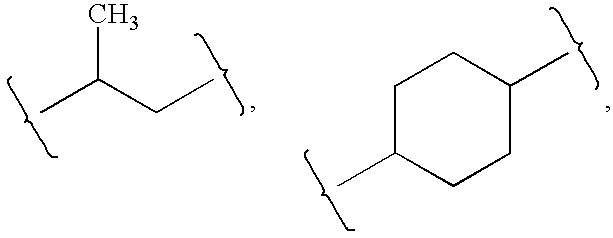Substituted aromatic compounds for inflammation and immune-related uses
a technology of aromatic compounds and substituted compounds, which is applied in the field of biologically active chemical compounds, can solve the problems of inability to inhibit il-2 production, inability to bind to any antigenic stimulus, and inability to achieve antigenic stimulation, so as to prevent inflammatory conditions and immune disorders.
- Summary
- Abstract
- Description
- Claims
- Application Information
AI Technical Summary
Benefits of technology
Problems solved by technology
Method used
Image
Examples
example 1
Synthesis of Representative Exemplary Compounds of this Invention
Compound 1: 2,6-difluoro-N-(2′-methyl-5′-(oxazol-2-yl)biphenyl-4-yl) benzenesulfonamide
[0321]
[0322] A mixture of 2-(3-iodo-4-methyl-phenyl)-oxazole (a, 50 mmol), 4-(4,4,5,5-tetramethyl-[1,3,2]dioxaborolan-2-yl)-phenylamine (b, 50 mmol), palladium catalyst (2.0 mmol), sodium bicarbonate (50 mmol) in a mixture of toluene (150 mL), water (50 mL), ethanol (10 mL) was heated at 100° C. for 16 h. The mixture was taken up with EtOAc (200 mL), washed with water (2×100 mL) and dried (Na2SO4). The brownish solid obtained on concentration was eluted by DCM through a layer of silica gel to give c as a yellowish solid (11.0 g). 1H-NMR (CDCl3) δ 7.9 (m, 2H), 7.68 (s,1 H), 7.3 (d, 1 H, J=8), 7.2 (m, 3H), 6.8 (d, 2H, J=8), 3.7 (br, 2H), 2.34 (s, 3H) ppm; ESMS calcd for C16H14N2O: 250.1; found: 251.1 (M+H+).
[0323] To a solution of 2′-Methyl-5′-oxazol-2-yl-biphenyl-4-ylamine (c) (30 mg, 0.12 mmol) in MeOH (2 mL) was added 2,6-difluo...
example 2
Inhibition of IL-2 Production
[0346] Jurkat cells were placed in a 96 well plate (0.5 million cells per well in 1% FBS medium) then a test compound of this invention was added at different concentrations. After 10 minutes, the cells were activated with PHA (final concentration 2.5 μg / mL) and incubated for 20 hours at 37° C. under CO2. The final volume was 200 μL. Following incubation, the cells were centrifuged and the supernatants collected and stored at −70° C. prior to assaying for IL-2 production. A commercial ELISA kit (IL-2 Eli-pair, Diaclone Research, Besancon, France) was used to detect production of IL-2, from which dose response curves were obtained. The IC50 value was calculated as the concentration at which 50% of maximum IL-2 production after stimulation was inhibited versus a non-stimulation control.
Compound #IC50 (nM) 47425 nM 1, 7750 nM 76500 nM
[0347] Inhibition of other cytokines, such as IL-4, IL-5, IL-13, GM-CSF, TNF-α, and INF-γ, can be tested in a similar man...
example 3
Patch Clampl Studies of Inhibition of Icrac Current in RBL Cells, Jurkat Cells, and Primary T Cells
[0348] In general, a whole cell patch clamp method is used to examine the effects of a compound of the invention on a channel that mediates Icrac. In such experiments, a baseline measurement is established for a patched cell. Then a compound to be tested is perfused (or puffed) to cells in the external solution and the effect of the compound on Icrac is measured. A compound that modulates Icrac (e.g., inhibits) is a compound that is useful in the invention for modulating CRAC ion channel activity.
1) RBL Cells
Cells
[0349] Rat basophilic leukemia cells (RBL-2H3) are grown in DMEM media supplemented with 10% fetal bovine serum in an atmosphere of 95% air / 5% CO2. Cells are seeded on glass coverslips 1-3 days before use.
Recording Conditions
[0350] Membrane currents of individual cells are recorded using the whole-cell configuration of the patch clamp technique with an EPC10 (HEKA Ele...
PUM
 Login to View More
Login to View More Abstract
Description
Claims
Application Information
 Login to View More
Login to View More - R&D Engineer
- R&D Manager
- IP Professional
- Industry Leading Data Capabilities
- Powerful AI technology
- Patent DNA Extraction
Browse by: Latest US Patents, China's latest patents, Technical Efficacy Thesaurus, Application Domain, Technology Topic, Popular Technical Reports.
© 2024 PatSnap. All rights reserved.Legal|Privacy policy|Modern Slavery Act Transparency Statement|Sitemap|About US| Contact US: help@patsnap.com










